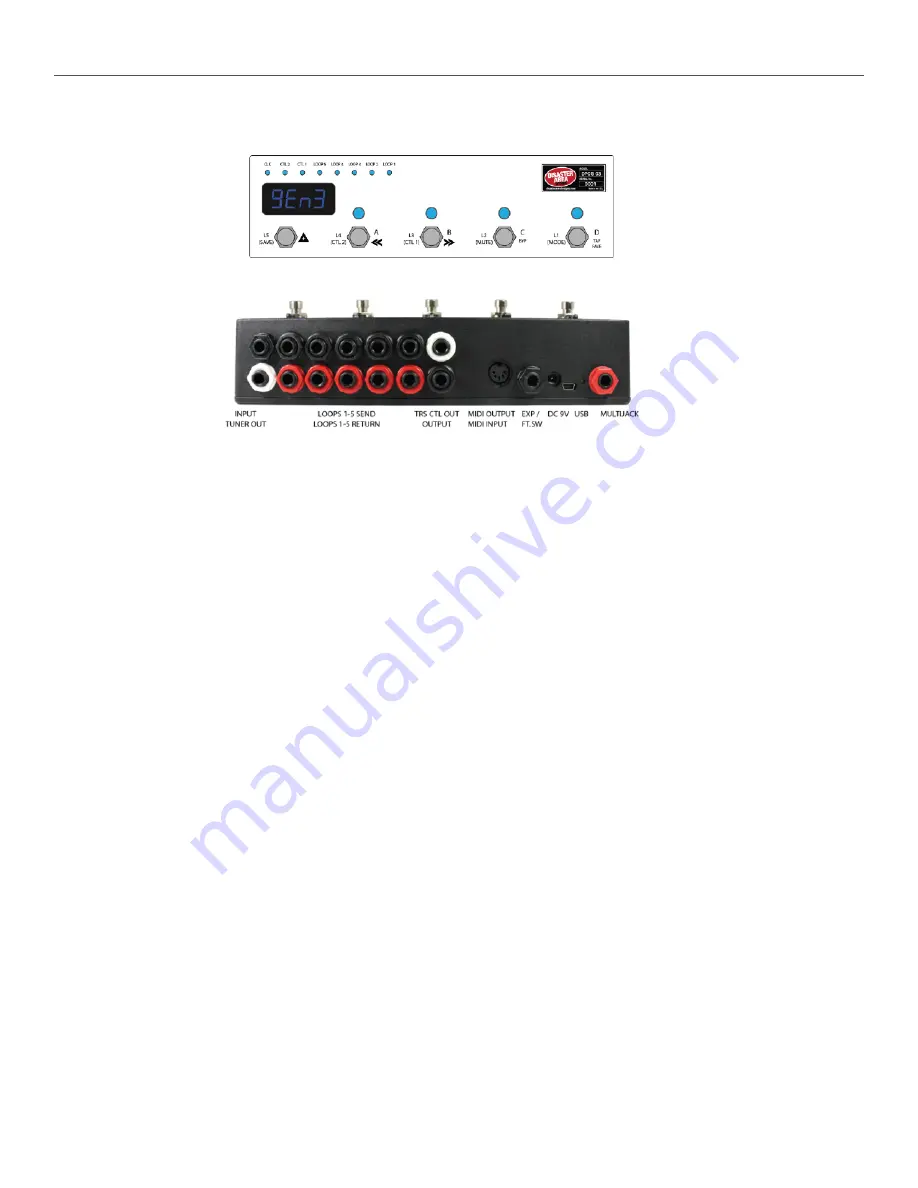
of
4
28
2. Controls and Connections
CONTROL PANEL
REAR PANEL
Input: Connect your guitar or the output of an effects pedal here.
Tuner Out: Connect the input of your tuner pedal here. The Tuner Output is separately buffered and is always active.
Loop 1 Send - Return:
Loop 1 features a bypassable signal buffer. Bypass the buffer in the DPC Setup menu to allow this loop to
be used with impedance sensitive pedals such as germanium fuzzes, vintage wahs, etc. Connect the black SEND jack to the input of
each pedal, and the red RETURN jack to the output of the pedal.
Loops 2-5 Send - Return: Loops 2-5 have their own buffer section that is always active. Connect the black SEND jack to the input of
each pedal you would like to control, and the red RETURN jack to the output of the pedal.
TRS CTL Out:
The upper white jack is an isolated stereo / TRS connector designed to switch control functions on amplifiers or
pedals. No audio is carried on this jack, only switching signals. This jack may be assigned to one of several types of control function
including normally-closed, normally-open, momentary, or tap tempo.
Output: The lower black jack is the audio signal output. Connect this to the next pedal in your chain or directly to your amplifier or
recording interface, etc. The output jack is separately buffered to ensure proper output impedance regardless of whether any pedals
are engaged.
MIDI Output / MIDI Input: Standard 5-pin MIDI output, connects to your first MIDI pedal input. The MIDI output jack doubles as a MIDI
input using a Disaster Area MIDI Y-cable (sold separately.) The MIDI input allows the DPC-5 Gen3 to accept incoming MIDI messages
and merge them in with its own data stream.
Expression Input: The black jack is a multi-function connector that can accept an expression pedal or a momentary footswitch. Starting
in v1.01d the Expression jack may also serve as an additional MIDI out just like the MultiJack. Consult the Expression section for more
details.
DC 9V:
Standard DC power supply input, 9V center negative. The DPC-5 Gen3 requires approximately 80mA if used by
itself. If an external USB HOST device is connected, the DPC-5 will need to be supplied with enough current to power both itself and
the USB device.
USB MIDI:
The standard DPC-5 firmware allows the USB port to function as a MIDI interface for your compatible PC, Mac, or
iPad (using the Apple Camera Connection Kit.) The DPC-5 will receive and send MIDI messages over USB for device control.
USB HOST:
If the USB Host firmware is installed, the DPC-5 USB port may be used to send and receive MIDI messages to
supported USB devices.
Status Indicator: This LED that blinks to let you know the pedal is working. It also blinks at a slower rate to indicate that the pedal is in
boot loader mode during a firmware update.
MultiJack:
The final jack on the panel is our astounding MultiJack! The MultiJack can do all kinds of cool stuff, like receive
expression or tap tempo, send taps to your devices, or even send MIDI to additional devices.
Disaster Area Designs
DPC-5 Gen3



















